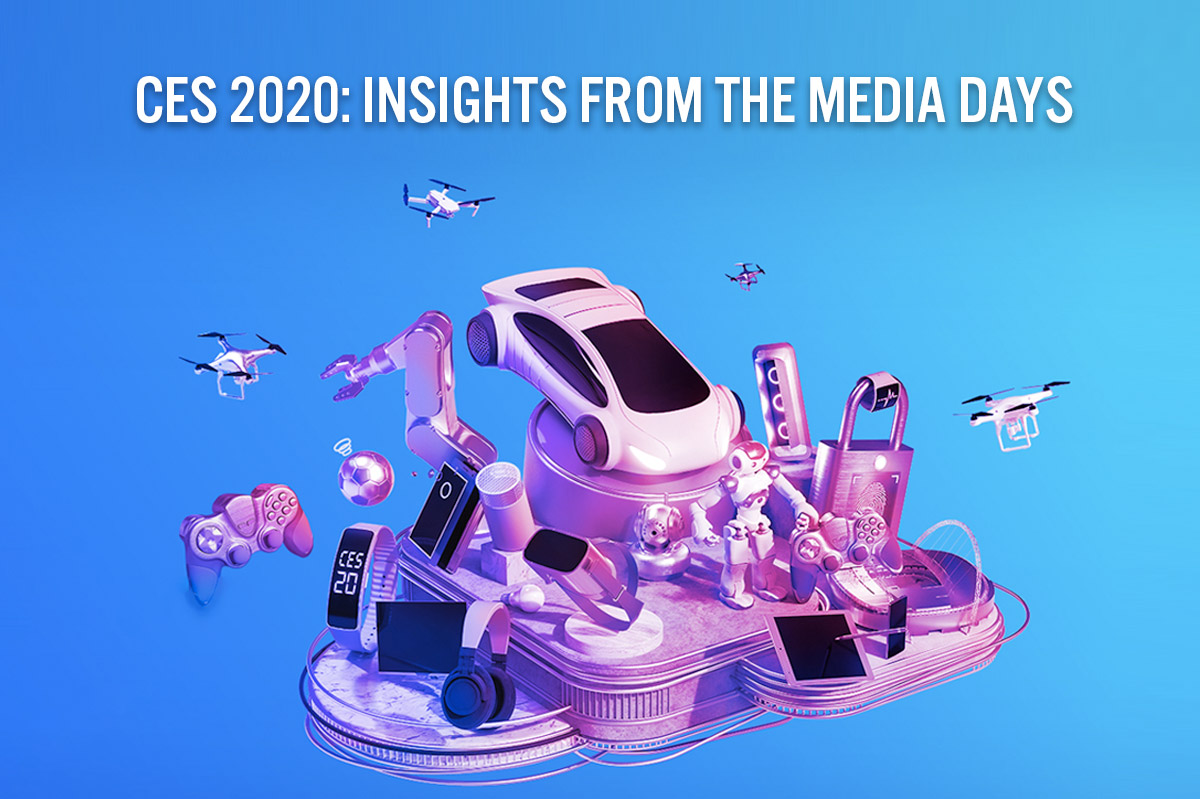
DIpil Das
CES 2020 is hosting 300 conference sessions with 1,100 speakers, covering topics such as 5G connectivity, AI, augmented and virtual reality technologies, health and wellness, robotics, smart cities, sports and more. More than 1,200 startups from over 45 countries are participating in this event.
We present our top five insights from the media days on January 5–6:
The dynamic of the consumer electronics industry has changed as we enter the decade of the Intelligence of Things, powered by 5G.
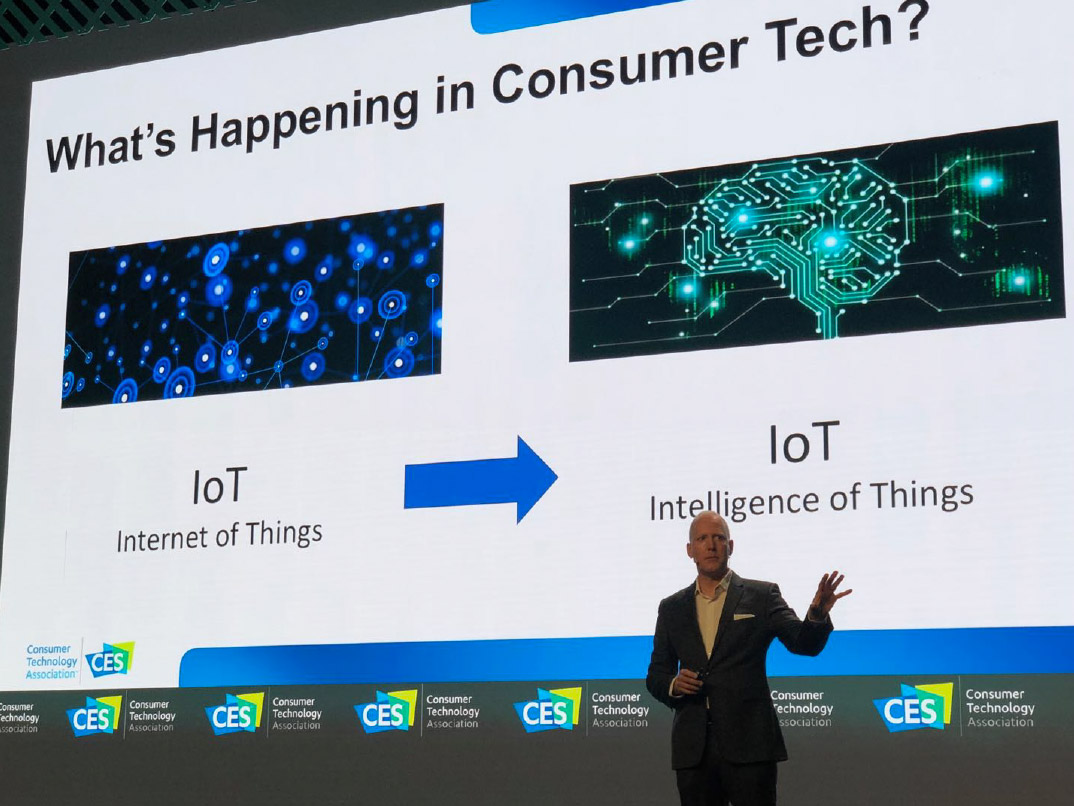 Steve Koenig, Vice President of Research at the Consumer Technology Association, talks about the change in definition of “IoT.”
Steve Koenig, Vice President of Research at the Consumer Technology Association, talks about the change in definition of “IoT.”
Source: Coresight Research [/caption] The ecosystem of a 5G farm in the future
The ecosystem of a 5G farm in the future
Source: Coresight Research [/caption] The consumerization of AI will see intelligent use cases in machine learning, end services, content services and emerging technologies. Retailers can leverage AI to better understand and engage with their customers.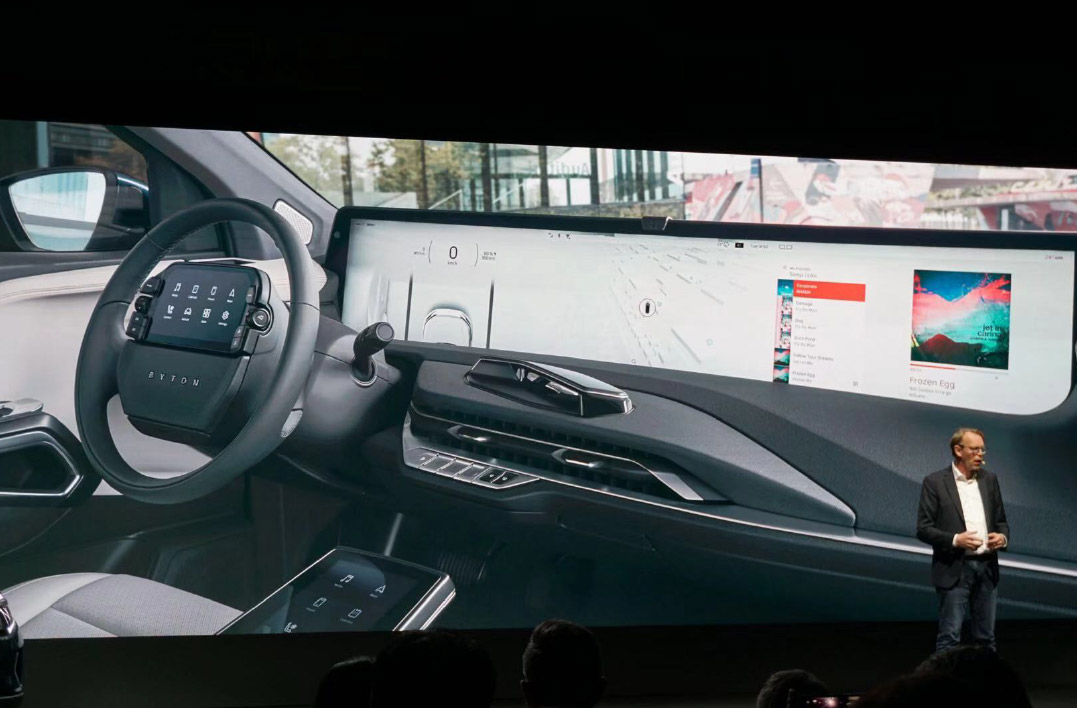 China-based electric-car startup Byton is launching a developer program for its M-byte electric SUV, to unlock apps that will enable interactions with customers through the digital screens built into its vehicles.
China-based electric-car startup Byton is launching a developer program for its M-byte electric SUV, to unlock apps that will enable interactions with customers through the digital screens built into its vehicles.
Source: Coresight Research [/caption] Nest Hello’s smart doorbell (left) and Whirlpool’s smart oven (right)
Nest Hello’s smart doorbell (left) and Whirlpool’s smart oven (right)
Source: Nest Hello/Whirlpool [/caption]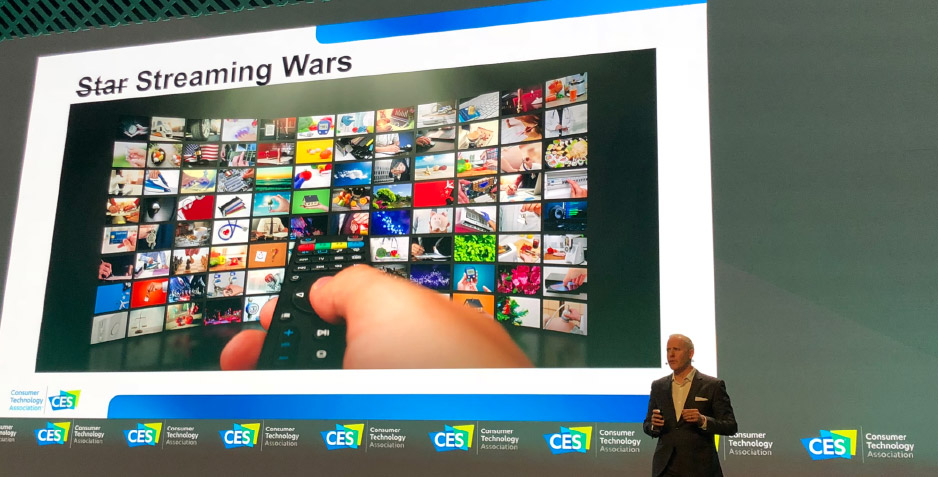 Star Wars is over, here come the streaming wars!
Star Wars is over, here come the streaming wars!
Source: Coresight Research [/caption]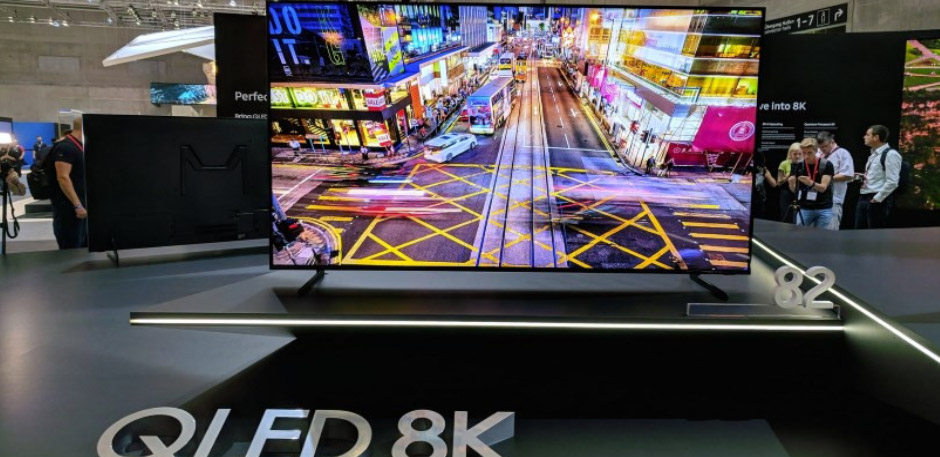 Samsung’s 8K UHD TV with AI chips
Samsung’s 8K UHD TV with AI chips
Source: Samsung [/caption] AI devices employ machine learning in four different ways, according to LG Electronics: LG demonstrates the AI smart-home ecosystem.
LG demonstrates the AI smart-home ecosystem.
Source: Coresight Research [/caption] Digital health is evolving quickly, lowering costs and improving outcomes. Digital health is the convergence of technologies to enhance the efficiency of healthcare delivery and make medicine more personalized for consumers. Use cases of digital health include evidence-based telemedicine, augmented doctors, remote surgery and virtual-reality training. Digital health has also become embedded in consumer lifestyles through the proliferation of personal devices and apps that monitor sleep, fitness, and health and wellness, as well as parent-and-baby technologies. More retailers and startups are focusing on sustainability as social values become more important to consumers.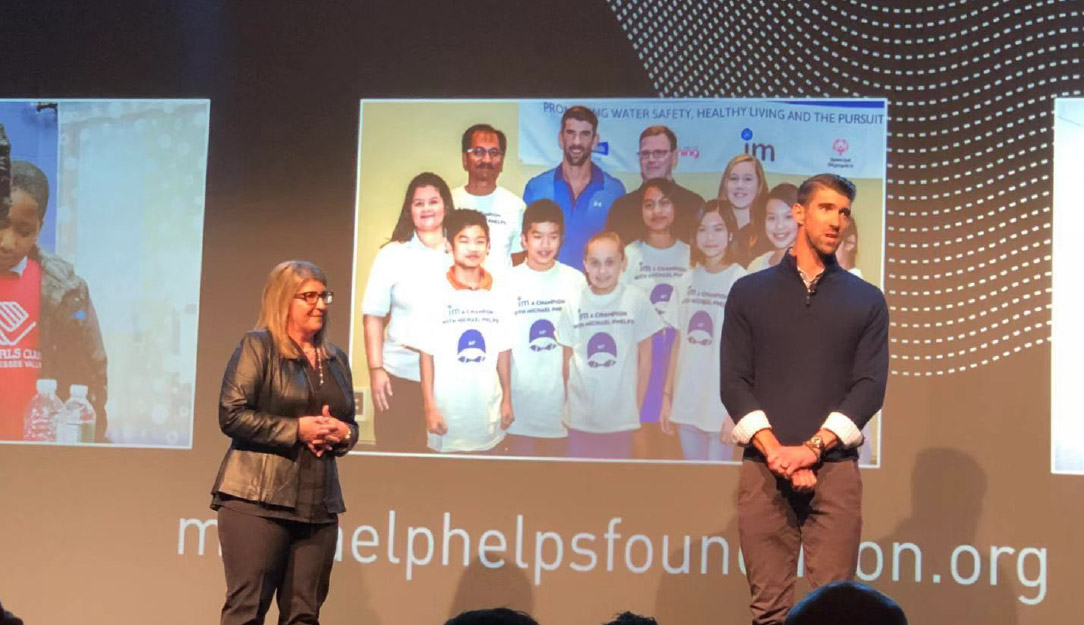 Swimmer Michael Phelps speaks about the Michael Phelps Foundation.
Swimmer Michael Phelps speaks about the Michael Phelps Foundation.
Source: Coresight Research [/caption]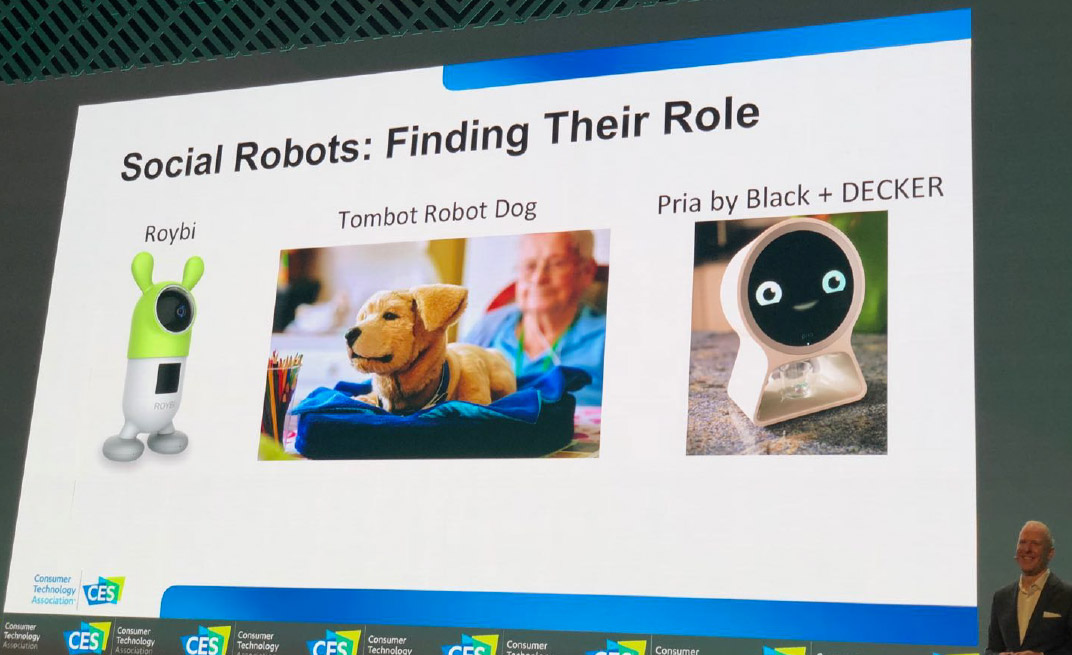 Social robots are on the rise.
Social robots are on the rise.
Source: Coresight Research [/caption]
- The new “IoT”—Intelligence of Things—bears testimony to the extent that AI is permeating commerce. More advanced than the Internet of Things, the new IoT has more influence on human behavior, by integrating AI to enable different technologies to make decisions and take actions.
 Steve Koenig, Vice President of Research at the Consumer Technology Association, talks about the change in definition of “IoT.”
Steve Koenig, Vice President of Research at the Consumer Technology Association, talks about the change in definition of “IoT.” Source: Coresight Research [/caption]
- 5G connectivity is the key driver behind the new IoT. According to a Consumer Technology Association forecast, there will be 20.2 million 5G handsets shipped in the US in 2020, which the association projects will grow to 133 million by 2023.
- Steve Koenig, Vice President of Research at the Consumer Technology Association, explained that there are two types of IoT from the enterprise perspective. “Massive IoT” means large numbers but small volumes of data, which can be applied in smart building, logistics, tracking and fleet management, smart agriculture and smart metering. “Critical IoT,” on the other hand, deals with data with high availability but low latency, which can be applied to remote healthcare, traffic safety control, smart grid automation and industrial applications.
 The ecosystem of a 5G farm in the future
The ecosystem of a 5G farm in the futureSource: Coresight Research [/caption] The consumerization of AI will see intelligent use cases in machine learning, end services, content services and emerging technologies. Retailers can leverage AI to better understand and engage with their customers.
- Retailers and brands can leverage machine learning to drive consumer engagement.
 China-based electric-car startup Byton is launching a developer program for its M-byte electric SUV, to unlock apps that will enable interactions with customers through the digital screens built into its vehicles.
China-based electric-car startup Byton is launching a developer program for its M-byte electric SUV, to unlock apps that will enable interactions with customers through the digital screens built into its vehicles. Source: Coresight Research [/caption]
- AI is being applied to devices such as televisions, smart phones and smart lighting to expand the capabilities of these devices.
 Nest Hello’s smart doorbell (left) and Whirlpool’s smart oven (right)
Nest Hello’s smart doorbell (left) and Whirlpool’s smart oven (right) Source: Nest Hello/Whirlpool [/caption]
- AI is being used in content services to increase value for consumers and thus drive potential growth for brands and retailers. For example, predictive analytics in smart entertainment devices can predict shows or songs that a specific consumer would like and therefore promote user engagement and growth in subscription video on demand (SVOD) services. US consumer spending on SVOD is expected to reach $20.6 billion by 2023.
 Star Wars is over, here come the streaming wars!
Star Wars is over, here come the streaming wars! Source: Coresight Research [/caption]
- AI is being widely embedded in emerging technologies such as robots, four-dimensional printing, bioplastic and 8K television.
 Samsung’s 8K UHD TV with AI chips
Samsung’s 8K UHD TV with AI chips Source: Samsung [/caption] AI devices employ machine learning in four different ways, according to LG Electronics:
- Level I—Efficiency-Feature Learning: AI helps devices to learn useful features and capabilities, exemplified by Amazon Alexa and Google Assistant, which focus on interactions.
- Level II—Personalization-Pattern Learning: AI allows machines to have memories, which they can access to identify patterns in data and apply appropriate actions. Robot cleaning machines are a good example.
- Level III—Reasoning-Causality Learning: AI provides machines with information on the whole working process and solutions to problems.
- Level IV—Exploration-Experimental Learning: AI has the potential to become a personal science lab that converts human intelligence into advanced solutions.
 LG demonstrates the AI smart-home ecosystem.
LG demonstrates the AI smart-home ecosystem. Source: Coresight Research [/caption] Digital health is evolving quickly, lowering costs and improving outcomes. Digital health is the convergence of technologies to enhance the efficiency of healthcare delivery and make medicine more personalized for consumers. Use cases of digital health include evidence-based telemedicine, augmented doctors, remote surgery and virtual-reality training. Digital health has also become embedded in consumer lifestyles through the proliferation of personal devices and apps that monitor sleep, fitness, and health and wellness, as well as parent-and-baby technologies. More retailers and startups are focusing on sustainability as social values become more important to consumers.
- Panasonic has supported the Olympic and Paralympic Games by providing state-of-the-art audio-visual technologies and solutions. Now, the company is developing technology to improve product energy efficiency and is innovating manufacturing processes to cut energy consumption. Panasonic also announced Olympic partnerships with Michael Phelps, Katie Ledacky, Lex Gillette and Sakura Kotumai as part of the “Team Panasonic” initiative.
 Swimmer Michael Phelps speaks about the Michael Phelps Foundation.
Swimmer Michael Phelps speaks about the Michael Phelps Foundation. Source: Coresight Research [/caption]
- Also on the rise are social robots, which are being developed to enhance the daily lives of consumers. For example, the Tombot Robot Dog emulates a puppy’s appearance and behavior to provide emotional support without requiring the care that a live pet would need.
 Social robots are on the rise.
Social robots are on the rise. Source: Coresight Research [/caption]